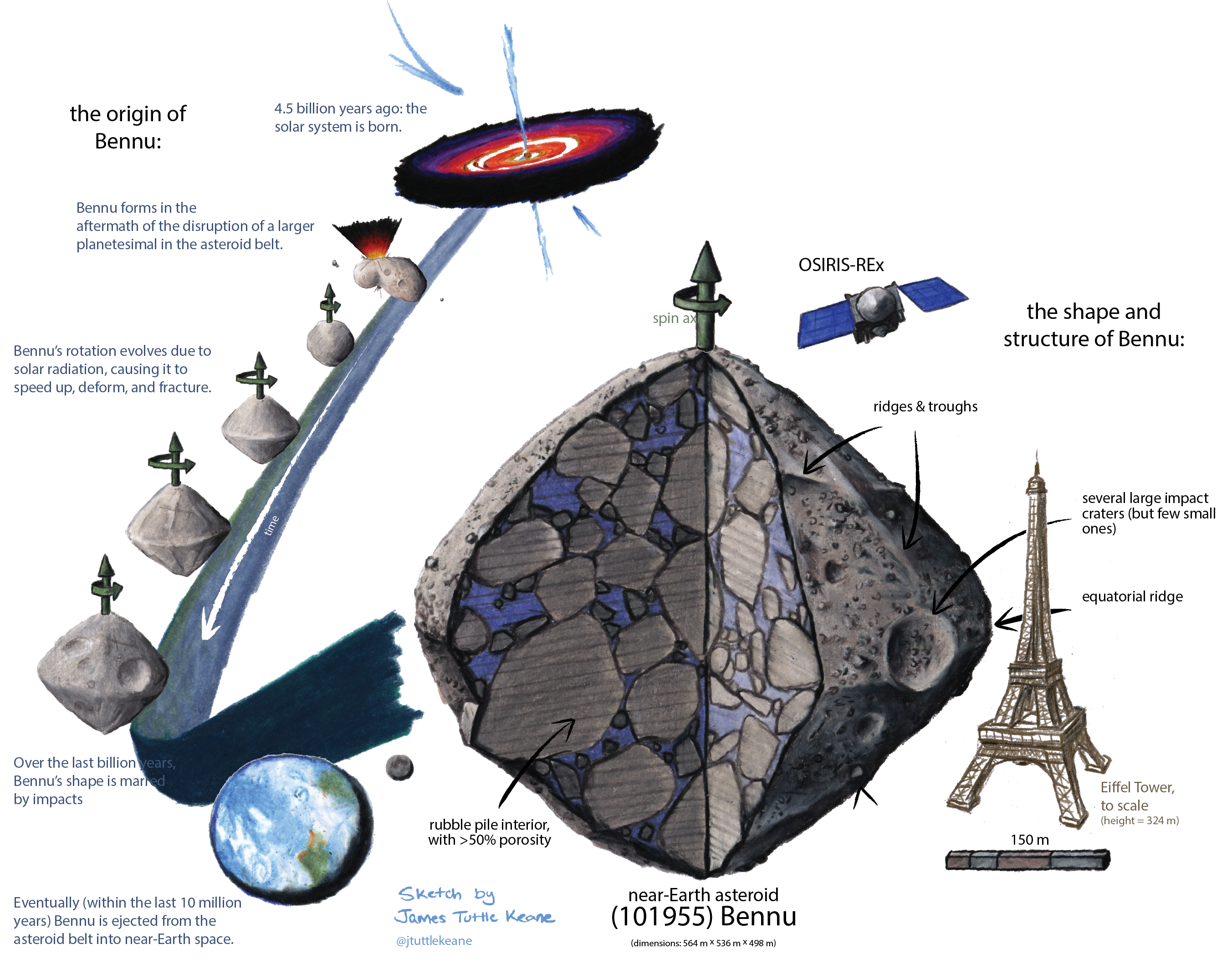The Asteroid Belt
Keepers of the Solar System’s Past
Made up of rock, iron, and ice, asteroids are remnants of planet formation. In the first 100 million years of the solar system, the objects that did not end up forming planets collided and coalesced with each other. Of the objects that eventually formed asteroids, the smaller ones experienced less heating from these collisions and may never have undergone melting. This preserved delicate materials from the solar system’s past and provides a window to look into the history of the solar system. When asteroids arrive on Earth as meteorites, they are studied extensively, with some containing chondrules, the oldest solids in the solar system. The University of Arizona has played an important role in some of the first missions to directly retrieve samples from asteroids, leading the OSIRIS-REx mission to sample the asteroid Bennu and playing a role in the Hayabusa and Hayabusa2 missions to sample asteroids.
A Million Small Worlds
Asteroids are present all over the solar system but are concentrated in the asteroid belt between Mars and Jupiter. Ceres was the first asteroid to be discovered in 1801. Initially classified as a planet, Ceres was eventually demoted to the title of dwarf planet as more objects of a similar size were found. Today, over a million asteroids have been discovered and more are being identified every day. Thanks to advancements in astrophotography and digital recognition, the rate at which we discover new asteroids is faster than ever. Today, the University of Arizona leads such efforts through astronomical surveys including the Catalina Sky Survey, SPACEWATCH®, and NEOWISE.
A Key to Humanity’s Future
Asteroids have potential to greatly alter humanity’s future, either through detrimental impacts or as vessels for future exploration. Projects like the Catalina Sky Survey are mapping near-Earth asteroids to identify threats to Earth, and there are other missions working on how to redirect any potentially hazardous asteroids. Ideas have included mining asteroids or using them as movable vessels for space missions, as they do not require launch from Earth. In the future, these small worlds will represent exciting potentials for human exploration.
QUICK FACTS
| CERES | BENNU | |
| MASS: | 9.1x1020 kg | 7.3x1010 kg |
| DIAMETER: | 946 km | 0.490 km |
| SURFACE GRAVITY: | 0.27 m/s2 | 0.0001 m/s2 |
| AVG. DISTANCE TO SUN: | 2.8 au | 1.1 au |


